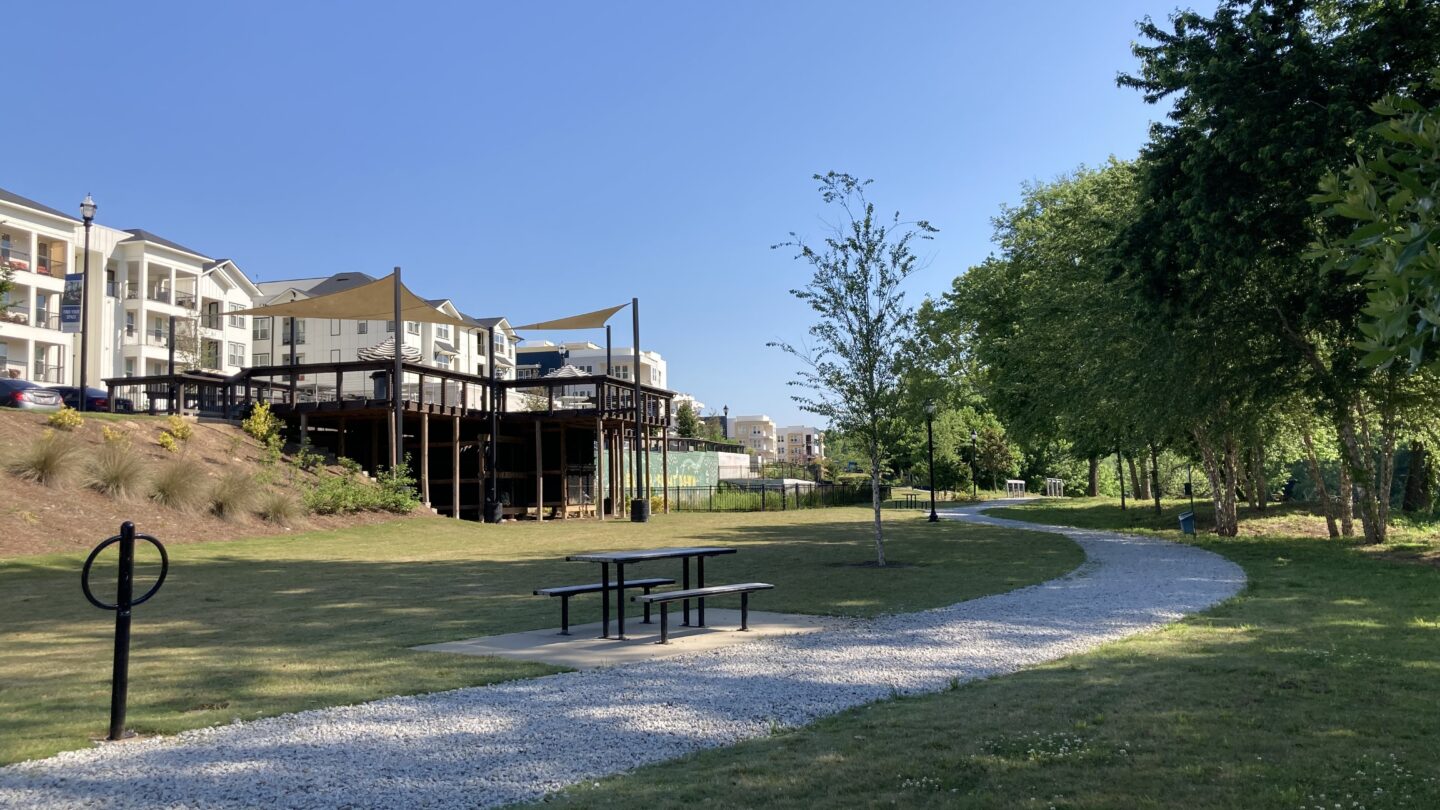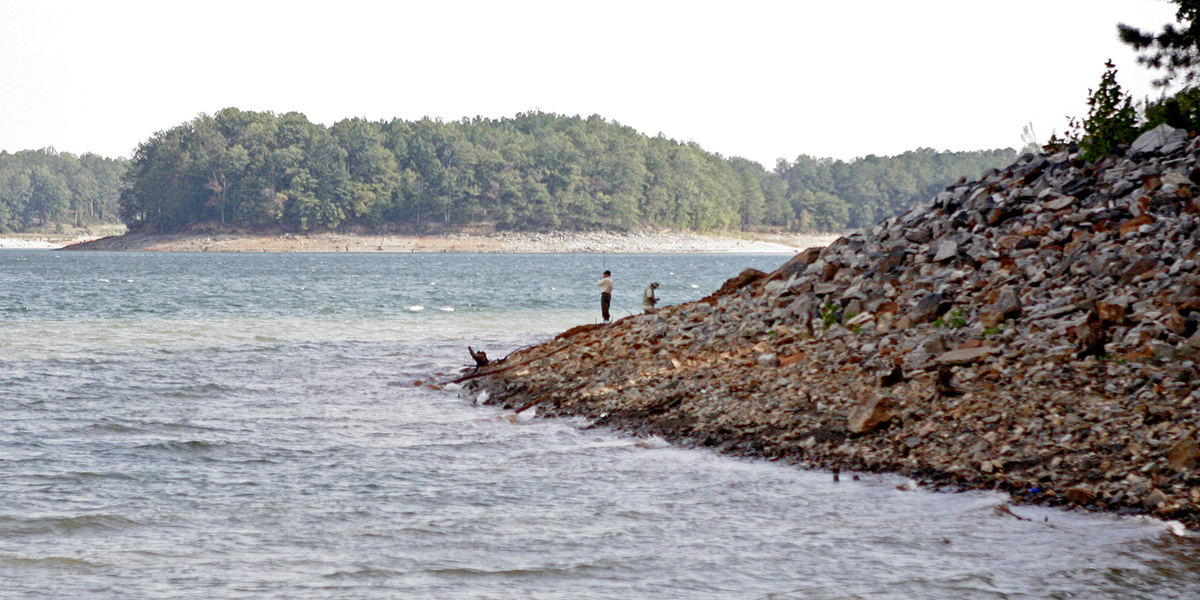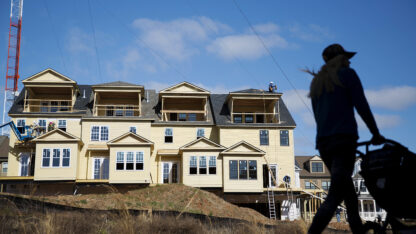Congress could bring more focus — and potentially money — for Chattahoochee River renewal

As it passes by Atlanta, the Chattahoochee River used to be more like an open sewer than any kind of amenity.
That’s changing, as the river’s been cleaned up and local governments plan to build parks and trails along its banks.
A bipartisan bill in Congress could help move those efforts along.
Earlier this year, U.S. Sen. Jon Ossoff used a public boat ramp on the Chattahoochee in Smyrna as the scenic backdrop for a press conference to tout the proposal. The bill would direct the U.S. Army Corps of Engineers to create a Chattahoochee River stakeholder program and could result in millions of dollars coming to projects to improve water quality and river access along the Chattahoochee.
“I grew up hanging out along the river,” Ossoff said. “I want to do my part to invest in this river’s long-term future and health.”
That future is dramatically different now that there’s not huge volumes of untreated sewage flowing into the Chattahoochee.
The location of Ossoff’s press conference, at Riverview Landing in Smyrna, is a case in point.
A ‘phenomenal’ transformation
“Once upon a time this whole stretch of river was auto salvage yards, junk yards,” Chattahoochee Riverkeeper Jason Ulseth said, standing on that same boat ramp several weeks later.
He said when he first started working for the organization, there was a 5,000-gallon diesel storage tank sitting on the banks of the river here. There was an old Greyhound bus on its side nearby. He’d walk around and find leaking 55-gallon oil drums.
Ulseth said the pollution on the land near the river was a direct result of the pollution in the river itself. Since the Chattahoochee was getting dumped with sewage, no one much cared what happened on its banks.
Now, this new park backs up to a brewery, a coffee shop and an apartment complex that markets itself for its river access.
“The transformation over the past 15 years is phenomenal,” Ulseth said.
That transformation is possible because the City of Atlanta, after being sued by environmental agencies and Chattahoochee Riverkeeper in the 1990s, has spent billions of dollars to upgrade its sewer infrastructure.
What happens in the tributaries
The sewer upgrades haven’t just cleaned up the river itself; they’ve also had meaningful effects on West Atlanta communities along one of its tributaries: Proctor Creek.
The creek starts in downtown near the Five Points MARTA station and flows about nine miles through northwest Atlanta, until it feeds into the Chattahoochee River near the Perimeter. It’s the only major Chattahoochee tributary that flows, start to finish, inside the Atlanta city limits.
In the past, Proctor Creek was a place where kids played, people went to fish and swim and even to conduct baptisms, according to Na’Taki Osborne Jelks, a Spelman professor and the co-founder of the West Atlanta Watershed Alliance.
But in more recent decades, it was less inviting.
“When I first was introduced to Proctor Creek, the smell of sewage flooded your nostrils,” Jelks said.
Because of the way Atlanta’s old sewers were designed, when there were heavy rain storms, they would overflow into Proctor Creek.
“You could see the tissue. I hate to gross you out, but, the condoms, you could see all of this stuff,” Jelks said.
The untreated sewage would flow down into the Chattahoochee, too. Jelks said people have told her that they felt like they were living next to an open sewer.
“What happens in those tributaries ultimately impacts the fate of the river as well as the local communities in which they’re based,” she said. “These communities are primarily communities of color, older communities, close to downtown in many cases.”
Since the sewer work, Proctor Creek has come a long way, Jelks said, though she’s still concerned about contamination in parts of the creek, and there are areas where the erosion is so bad, some people are worried about property loss, or even buildings falling into the creek.
That’s why she’s excited about the proposed Chattahoochee River program, which would also potentially bring projects and funding to the river’s tributaries.
More work to do
The program would be created by a big, generally popular, bipartisan water resources bill in Congress. The Water Resources Development Act would authorize up to $90 million of spending on the Chattahoochee; though the bill doesn’t allocate that money, that’s a separate process.
It’s passed the House and could come up for a vote in the Senate soon.
At the press conference for the program earlier this year, George Dusenbury, the Georgia-Alabama state director for the Trust for Public Land, said the proposed Chattahoochee program is the most significant federal legislation involving the Chattahoochee he’s seen in decades — if not ever.
“Having this kind of commitment from the federal government will help us raise additional public and private funds,” Dusenbury said.
It could boost a project his group is focused on. The Trust for Public Land is working with local governments and other organizations to create a network of trails and parks along the Chattahoochee throughout metro Atlanta called the Chattahoochee RiverLands.
Johns Creek is working on a park connected to the project and Atlanta recently acquired land to build the city’s first park with direct river access.
At the dock in Smyrna, Ulseth said he thinks the areas along the river here are about midway through a transformation from industrial uses to real estate.
“The river has come a long way, but we still have a long way to go,” he said.
A big remaining challenge is the pollution and flooding that can come from stormwater runoff. Rain washes pollutants and pesticides from roads, roofs, construction sites and yards into creeks and the river whenever there’s a storm.
That makes it a much more diffuse, and in some ways much harder, problem to tackle than Atlanta’s sewers, Ulseth said, because the sewers were a big, but isolated, challenge.
“We knew what it was, we knew where it was, and we just had to spend the money to get it upgraded and fixed,” Ulseth said. “The problem that we face today with stormwater runoff is that it’s not one municipality’s pipe that’s going into the river, it’s thousands of different pipes.”
Ulseth got in his boat and headed upstream to where Proctor Creek flows into the Chattahoochee. There was an island of trash collecting there with Styrofoam, plastic bottles and beer cans.
But Ulseth’s optimistic.
“I saw an otter in Proctor Creek a couple weeks ago. So wildlife is coming back. These waterways are coming back to life, but they need some more help,” he said. “They’ve come a long way over the past 20 to 30 years but we’re not there yet. This funding, this act, this stakeholder’s group that’s going to identify the problems going into the future is going to be that next step to take us to where we need to be.”








